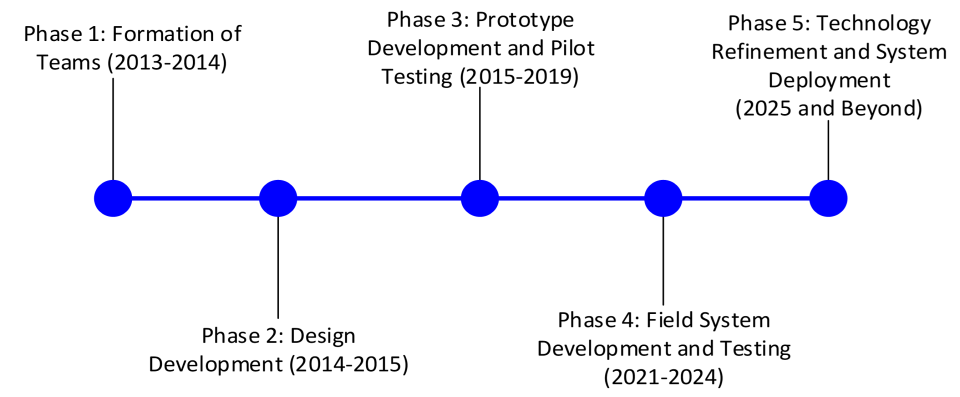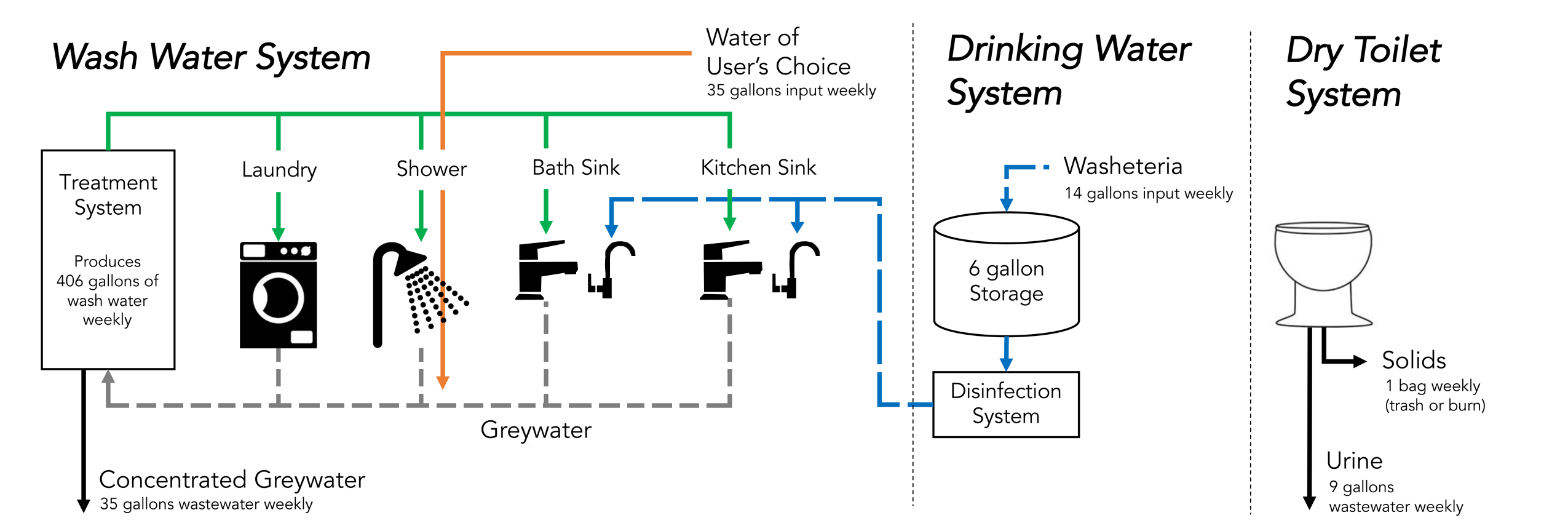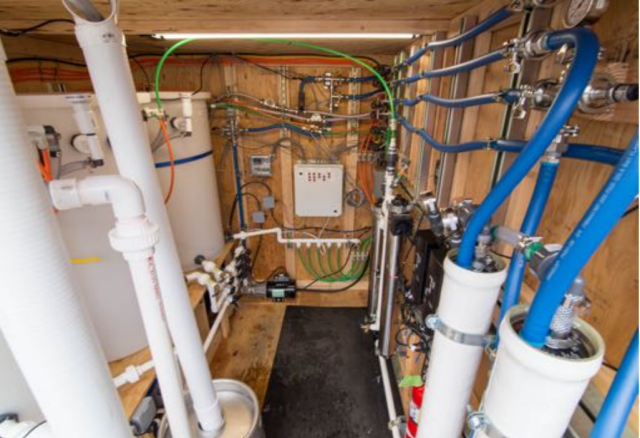Water Reuse Case Study: The Alaska Water and Sewer Challenge
The EPA and partners have created a series of case studies that highlight the different water reuse approaches communities have taken to meet their water quality and water quantity needs. Each case study contains information about the technical, financial, institutional, and policy aspects of these water reuse systems and the communities they are located in.
On this page:
- Overview
- Context
- Solution
- Selected Design
- Potential Benefits
- Policy, Institutional, and Regulatory Environment
- Financial and Contractual Agreements
- Lessons Learned and Conclusions
- Background Documents
Overview
Thousands of residents in rural Alaska lack access to running water or flush toilets due to their remote locations and the local climate. To address this issue, the Alaska Department of Environmental Conservation (DEC) funded the Alaska Water and Sewer Challenge - a research and technology development competition intended to identify a suitable decentralized water reuse solution for use in rural Alaska homes. The DEC solicited designs that could safely and affordably supply homes with clean water but were also acceptable for the end users and feasible for implementation in rural Alaska. The winning design consisted of an onsite greywater recycling system coupled with urine-diverting dry toilets, which could significantly reduce the reliance on imported water for non-potable uses. Since the system avoided the use of water for flushing toilets, it limited the need to export sewage for treatment and disposal. As of this publication in June 2023, the selected design was progressing toward the implementation stage.
Context
Over 3,300 Alaska homes do not have access to indoor potable water or flush toilets. Many of these homes are in rural villages and can only be accessed in the summer by plane or boat. Conventional wastewater treatment plants and conveyance systems are not reasonable options in these communities for many reasons, including the distances between homes and community centers and frozen subsurface conditions in many areas (i.e., permafrost). In the past, various agencies funded expensive community-wide water supply and sanitation efforts, typically focused on truck-haul water programs, to meet the needs of the communities amid the challenging conditions. Households in parts of rural Alaska import an average of 420 gallons (1,590 liters) of potable water per week from truck-haul access points in their communities. This approach provides safe drinking water to citizens by giving them access to potable water in a central location. Similarly, community-wide centers provide a location for rural Alaskans to safely dispose of waste from dry toilets (i.e., honey buckets, plastic lined buckets that are widely used to dispose of urine and feces). However, both practices are associated with high operational costs for communities and burden residents with the need to haul large loads of water and waste to and from central access points. The high cost of potable water and waste disposal means some families may choose to purchase less water than they need, capture and utilize untreated rainwater, reuse water without adequate treatment, and potentially dispose wastes directly to the environment. Additionally, the lack of affordable in-home water and sewage disposal is linked to many health challenges for rural Alaskans. Generally, people who do not have enough water for basic hygiene are at higher risk of gastrointestinal infections, such as those caused by norovirus, E. coli, or Cryptosporidium parvum.
Solution
The Alaska Department of Environmental Conservation (DEC), in coordination with Tribal, state, and federal agencies, initiated a research and development competition in 2013, to find more efficient and affordable ways to deliver drinking water and sewage disposal services to residents in rural Alaska. This competition, called the Alaska Water and Sewer Challenge, solicited innovative and cost-effective designs to meet the water supply needs of rural Alaska households. The Alaska Water and Sewer Challenge received applications from close to 20 teams.

Figure 1: Alaska Water and Sewer Challenge program schedule.
Alaska Water and Sewer Challenge representatives identified the following performance targets to evaluate the submitted designs:
- Constructability and durability.
- Capital cost.
- Water use for health benefits (minimum capacity of 15 gallons, or 57 liters, per day per person).
- Operation and maintenance cost (monthly cost less than $135 per household).
- Freeze and thaw recovery capability.
- Modularity of household system.
- Feasibility (extreme temperatures, permafrost, remote accessibility, operability, regulatory).
- Compliance with plumbing code.
- Parts availability.
- Acceptance and use by end users.
During prototype development stage of the challenge (Phases 2), all teams were guided by a steering committee made up of Tribal, state, and federal agencies with knowledge relevant to the technical aspects of the projects. The group met regularly to review the status of work, make decisions about the progression of each team, and evaluate team proposals and prototypes. During the development stage and later stages of the challenge, focus groups engaged the public (including potential users) on the feasibility and usability of possible designs.
Three teams were selected as semi-finalists to move onto Phase 3 - Prototype Development and Pilot Testing, which involved monitoring pilot-scale versions of each team’s design over nine months. Because many rural Alaska households lack flush toilets, all three teams incorporated reuse into their design by treating greywater separately for non-potable reuse.
Selected Design: Onsite Reuse in Rural Alaska
In 2022, one of the three semi-finalist designs was selected as the winning design and moved into the field system development and testing phase (Phase 4). This team, made up of academics from University of Alaska Anchorage (UAA), engineering consultants, and health professionals, partnered with two rural communities (Kipnuk and Koyukuk) to gather feedback and inform their team’s design.
Figure 2 shows a schematic of the prototype design developed by the UAA team. The wash water system collects greywater from the kitchen and bathroom sinks, shower, and laundry and treats the water to a level suitable for human contact, but not for drinking. The reused water is pumped to fulfill the same non-potable demands (kitchen sink, bathroom sink, shower, and laundry). A separate drinking water source (typically from a truck-haul supplier) is used to supply individual taps in the kitchen and bathroom dedicated to potable uses. The greywater recycling system generates a small volume of concentrated greywater which must be disposed of on a weekly basis. Also, the use of urine-diverting dry toilets reduces odors, as compared to conventional dry toilets in which urine and feces are combined (i.e., honey buckets). However, waste from the urine-diverting toilet must be transported from the home by the residents to a disposal facility.

Figure 2: Prototype system schematic showing separate systems for various water uses for the household. Blue lines (long dash) represent potable water sourced from centralized community washeterias, orange lines represent potable or non-potable water (e.g., rainwater) selected by the user to supplement the greywater recycling system, green lines represent non-potable onsite recycled water, and grey lines (short dash) represent greywater, which is treated onsite. Black lines represent waste residuals hauled offsite. Source: University of Alaska Anchorage.
By using the greywater recycling system, the user can generate 406 gallons (1,537 liters) of wash water from an initial input of only 35 gallons (132 liters) of water weekly. This input is represented by the orange line in Figure 2 and can consist of non-potable sources, such as rain, river, or lake water, depending on availability to the user. This water source supplies the wash water system and will be used only for non-potable demands. Because the greywater recycling system uses a reverse osmosis filter as part of its treatment process, it generates a concentrated greywater waste stream which must be collected and removed from the treatment system periodically. The UAA team estimates that 35 gallons (132 liters) of concentrated greywater and nine gallons (34 liters) of urine will be removed from the home weekly—44 gallons (166 liters) total. On a weekly basis, it is estimated that the households will need 14 gallons (53 liters) of potable water to be hauled in for potable uses.

Figure 3: Interior of the prototype system. Source: University of Alaska Anchorage.
The proposed treatment system is housed in a 10-foot (3-meter) shipping container to allow for affordable and modular construction and deployment. The treatment process includes the following steps:
- Settling.
- Air-assisted soap removal.
- Nanofiltration and reverse osmosis filtration.
- UV disinfection.
- Ozone disinfection.
UAA demonstrated that the treatment system can achieve over 7 log10 removal of both bacteria and viruses (i.e., 99.99999% removal), lower turbidity to less than 0.1 nephelometric turbidity units (NTU), reduce total organic carbon to concentrations less than 0.5 milligrams per liter, and maintain a pH between 6 and 8. The system is self-contained and energy requirements are met with a 12-volt battery, as connection to the electrical grid is challenging for many of these communities.
Potential Benefits
Onsite greywater reuse will significantly reduce the amount of hauled water needed for households and communities. For example, if the design selected from the Alaska Water and Sewer Challenge is scaled past the research phase and implemented in communities, each household with an onsite non-potable greywater reuse system would save the cost and labor of hauling about 400 gallons (roughly 1,500 liters) of potable water per week. There will still be a need to import some potable drinking water from the community’s truck-haul access point, but the volume will be significantly reduced, from the current average of 420 gallons (1,590 liters) per week per household to 14 gallons (53 liters) per week per household. Because the greywater recycling system is separate from the toilets, the design would also drastically reduce the volume of wastewater needed to be hauled offsite for disposal when compared to conventional residential systems that combine wastewater from flush toilets with greywater. Incorporating a urine-diverting toilet also reduces odor issues compared to conventional dry toilets that combine urine and feces (i.e., honey buckets).
Given the location of these communities and the harsh environmental conditions, all-terrain vehicles are needed to transport water and wastewater. The fuel for these vehicles must also be flown in. The combined cost of the vehicles and fuel is prohibitively high for many families, requiring many to ration their water or try to reuse it in unsanitary ways; the latter likely contributes to an increased disease burden in these communities. Reducing the frequency of hauling potable water from access points back to communities can save on fuel costs and free up time for other pursuits. UAA’s model provides a cost-effective way for rural Alaskans to meet their daily water needs which is imperative to the health and vitality of these communities.
Policy, Institutional, and Regulatory Environment
The Alaska Water and Sewer Challenge was developed by the Alaska Department of Environmental Conservation in coordination with Tribal, state, and federal agencies. There has been significant collaboration with other entities, including the National Blue Ribbon Commission for Onsite Non-Potable Water Systems, the WateReuse Association, U.S. EPA, the Indian Health Service, the U.S. Arctic Research Commission, the Centers for Disease Control and Prevention, and the U.S. Department of Agriculture Rural Development Program.
The current focus of the Alaska Water and Sewer Challenge is to develop decentralized non-potable reuse designs that produce water that is safe for human contact. The EPA’s Human Subjects Research Review Office provided approval before the beginning of Phase 4 testing at a residential unit on University of Alaska’s campus. Currently, Alaska does not have a water reuse program and does not regulate water reuse at the state level, including for onsite reuse.
Financial and Contractual Agreements
When the Alaska Water and Sewer Challenge was initially launched, the state legislature funded Phases 1–3 with $4 million in state and federal funding (75 percent state and 25 percent EPA). Phase 4 is currently funded with $1.3 million (again, 75 percent state and 25 percent EPA). Phase 5, including deployment of the system to houses, will require more funding, but it is unclear what sources will support this final stage.
Lessons Learned and Conclusions
Research and technology development competitions, such as the Alaska Water and Sewer Challenge, take time to identify and test realistic solutions and develop and deploy prototypes. This competition encountered and overcame various issues since its inception, including staff changes across the involved partner organizations and delays due to COVID-19. The Alaska Department of Environmental Conservation and the selected team from the University of Alaska Anchorage have had to persevere while working toward a feasible design. Despite these challenges, the final stages (Phase 5) of the Alaska Water and Sewer Challenge are still being implemented due to the great need for safe, cost-effective water supply and disposal in rural Alaska communities.
There are many hurdles still to come to implement the selected onsite reuse system designed for the Alaska Water and Sewer Challenge, including identifying funding mechanisms, technical challenges associated with deployment in remote areas, operation and maintenance of the system, and user acceptance of water reuse.
Background Documents
Alaska Department of Environmental Conservation. 2013. Request for proposals (statements of qualifications).
Alaska Department of Environmental Conservation. 2022. Alaska Water and Sewer Challenge.
